Sealant for threaded pipe is not an interesting subject. But if you’re reading this, you’ve realized how important they are. But I’m not going to write an in depth and comprehensive plumbing blog about this dry subject. This isn’t for the apprentice plumber to learn their trade.
This article is for the average homeowner just trying to make a plumbing repair. So look further on the internet if you want to win an argument or double check what your plumber recently did. I’m going to explain what you need to know and not all that you can know about thread sealants.
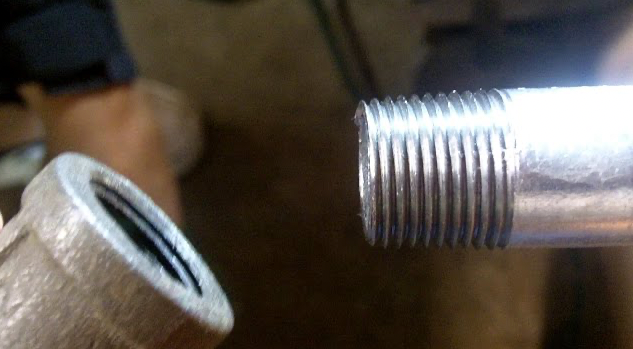
What is pipe thread sealant?
Pipe thread sealant is a product to be applied to a manufacturers thread to assure a tight seal. In plumbing you’ll normally find this on water, drain or gas pipe threads. And before we talk about what they do let’s figure out what basic forms they take.
Teflon tape
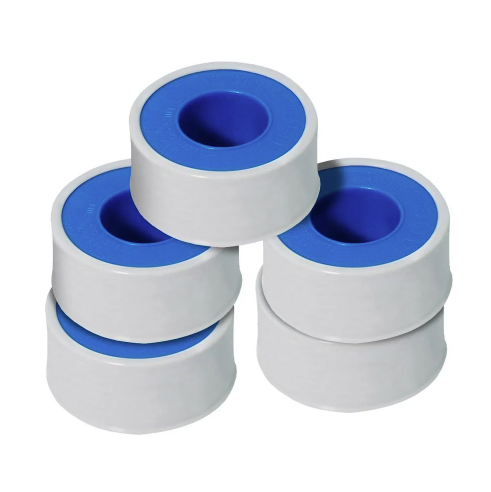
Teflon tape isn’t the correct name for this particular type of thread sealant, but it’s probably the term you’re most familiar with. Thread seal tape is the correct term. Teflon tape is the brand name.
Calling thread seal tape “Teflon tape” is like calling all tissues “Kleenex”. It’s just been adopted colloquially. And plumbers have a million terms for just about everything, anyway.
Thread seal tape normally comes in the form of a 1/2 inch white tape that’s wrapped around a thread multiple times. My preferred brand of thread seal tape is manufactured by Oatey.
The type you use matters. But it isn’t used for all threads or connections.
Thread compound

Thread compound–also called pipe dope–is the paste version of thread seal tape. It’s very easy to use but can be pretty messy. And it’s usually overused.
It was originally yellow. Ol’ yella number 5 was the term we used. But the white teflon based thread compound is what you want. My preferred thread compound is Tplus2 manufactured by Rectorseal.
What do thread sealants do?
Thread sealants aren’t a fix all. And they don’t do as much as you might think. They serve only a few purposes. And can actually create problems if not used properly. Thread sealants do the following:
- Lubricate threaded joints to allow for a tighter fit.
- Partially seal any voids.
- Prevents thread joints from rusting and allows for an easier removal of threaded fittings.
As you can see, they do a few things. And not always all for each joint. Sometimes you just need a threaded fitting to come apart more easily in the future. It doesn’t necessarily have to be leak proof. This is common on the thread joint between a water heater relief valve and its threaded drain pipe.
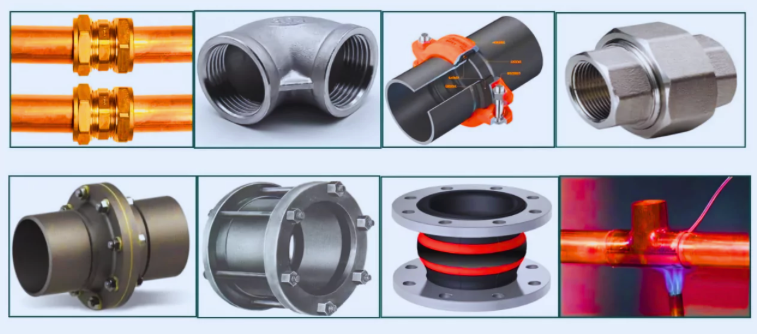
Where to use thread seal tape
Where to use “Teflon tape” is very much a personal decision. Many plumbers will argue this point. But after being taught in the plumbers union and serving as a residential plumbing technician for an additional 20 years, I’ll tell you my opinion.
As a rule I use thread sealant tape on all threaded fittings that must be air or water tight that do not have an alternative seal on them already. That means that if there’s a rubber o-ring or washer of any sort, I won’t use thread seal tape. It could get in the way of a proper seal.
Flare joints are another spot that I won’t put thread seal tape. That includes flared copper water pipe and tubular drain pipes such as p-traps and tailpiece connections.
But I never use thread seal tape on gas pipe of any kind…ever. I don’t even use the special tape for gas pipe. I only use thread compound on gas pipe.
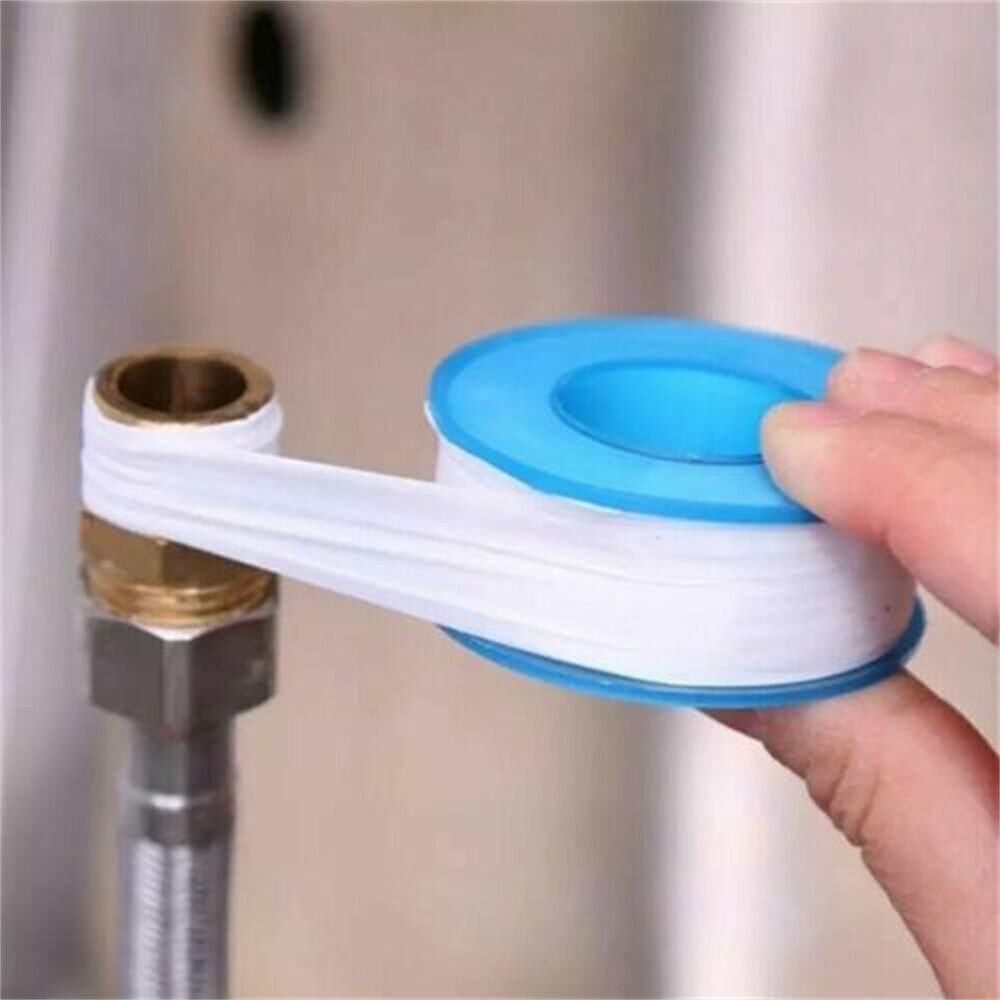
Where to use thread compound
You can use thread seal tape and pipe dope interchangeably.
The only exception to this rule is gas pipe and flare joints. Gas pipe should be joined with pipe dope only. Flare joints should be joined with pipe dope only.
If I were a homeowner and had limited resources, I’d just purchase liquid thread compound. You can use it anywhere a do-it-your-selfer would work.

How to install thread sealants
As I’ve said before, you can use both thread seal tape and thread compound pretty much interchangeably.
But I was taught to never take any chances on a leak if you don’t have to. And you never have to. So I follow the guidelines already discussed. But when I use them I do it in a very specific and consistent way.
How to install thread seal tape
When wrapping pipe threads with Teflon tape, you begin at the second or third thread. Never the first. This helps with starting a thread connection without cross threading it. You wrap your threads clockwise three times. Clockwise so that the tape won’t unwrap while screwing things together. Three times because any more is really a waste.
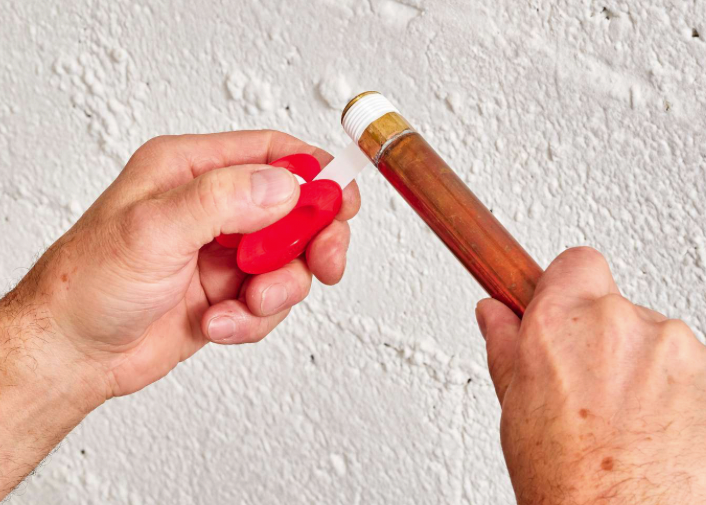
How to install pipe dope
Install pipe thread compound only on the first and second threads of the male thread only. This will prevent it from getting inside the pipe.
If you wipe it into the female connection, the compound will be forced into the pipe. If you’re working with gas pipe, the compound could get into a gas control valve and foul them badly.
And don’t waste pipe thread compound. Only spread a little bit onto the first and second threads. Any more than that is wasted. It’ll just make a mess.
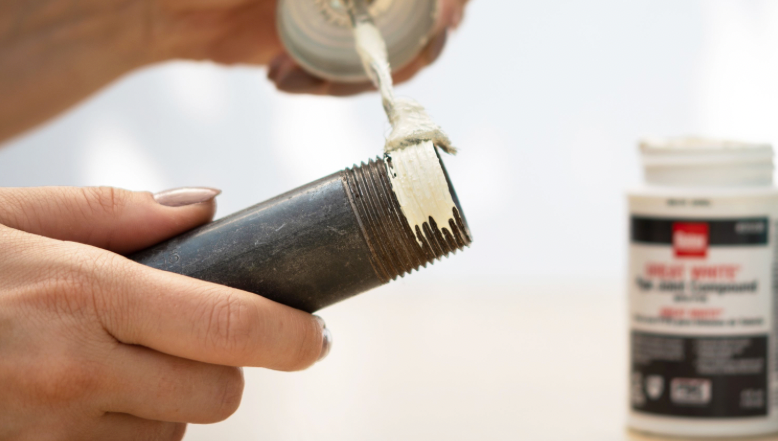
How this plumber was taught to install thread sealants
When I use thread compound I follow the instructions above. When I use thread sealant tape I use both; always. I wrap the threads three times starting at the second thread. I then wipe pipe dope on the first and second thread only.
I do this every time–not most of the time. And I don’t get leaks.
When to call a professional
Sometimes a thread will leak no matter what you do. And sometimes you can damage a plumbing appliance or fixture if you improperly apply thread sealants. If it just won’t seal correctly or if you’re dealing with gas pipe just call us.
Advocate Master Plumbing will ensure you’ll always speak to a master plumber on the phone. And that same master plumber will come to your home and resolve your plumbing issues.
We don’t train our plumbers to sell. We train them to serve our customers.

